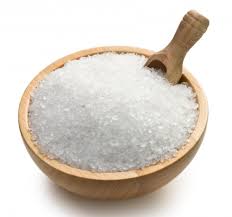Osteopathy & Epsom salt

What is Epsom salt?
Epsom salt (magnesium sulfate) is a chemical compound made up of magnesium, sulfur and oxygen. It gets its name from the town of Epsom in Surrey, where it was originally discovered. Despite its name, Epsom salt is a completely different compound than table salt. It was most likely termed “salt” because of its chemical structure.
How does Epsom salt work?
When Epsom salt is dissolved in bath water, it releases magnesium and sulfate ions. These particles can be absorbed through the skin, providing the body with magnesium and sulfates — which serve important bodily functions.
Epsom salt provides Magnesium
Magnesium is the fourth most abundant mineral in the body, the first being calcium. It is involved in more than 325 biochemical reactions that benefit the heart and nervous system. A lack of magnesium may contribute to high blood pressure, hyperactivity, heart problems and other health problems.
Epsom salt promotes sleep and stress reduction
Adequate magnesium levels are essential for sleep and stress management because magnesium helps the brain to produce neurotransmitters that induce sleep and reduce stress. Magnesium may also help the body to produce melatonin, a hormone that promotes sleep. Low magnesium levels may negatively affect sleep quality and stress.
Epsom salt supports exercise performance and recovery
Epsom salt baths may reduce muscle soreness and relieve cramps — two important factors for exercise performance and recovery. Adequate magnesium levels are helpful for exercise because magnesium helps the body use glucose and lactic acid.
Epsom salt may reduce pain and swelling
Epsom salt baths may also help to reduce pain and swelling. Many people report that taking Epsom salt baths improves symptoms of fibromyalgia and arthritis. The magnesium is deemed responsible for these effects, since many people with fibromyalgia and arthritis are deficient in this mineral.
Epsom salt provides Sulfate
Sulfate is essential for many biological processes, helping to flush toxins and to form proteins in joints, brain tissue and mucin proteins.
Recipe for using Epsom salt
Add two cups (approximately 475g) of Epsom salt to the water in a standard-sized bathtub and soak for 20-minutes up to 3 times per week. Putting the Epsom salt under running water may help it to dissolve more quickly.
Safety and side effects
While Epsom salt is generally safe, there are a few negative effects that can occur if used incorrectly. This is only a concern when it is taken orally (e.g. diarrhoea, bloating, nausea, headaches, light-headedness and flushed skin). Consult a doctor first.
Osteopathy and sports massage appointments available online:
https://woburn-osteopaths.cliniko.com/bookings#service.


